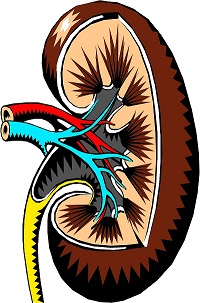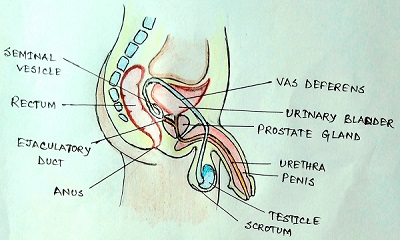What is the importance of Urinary System in our body?
Human urinary system functions as to filter blood and create urine as a waste product. The main organs of this system include the kidney, renal pelvis, ureters, bladder and urethra.
Our body takes nutrients from food and converts them into energy by digestion. In the process of digestion, the body absorbs the useful nutrients from food in the intestine and changes it into energy. After this, remaining waste products called excretory are left behind in the bowel and in the blood.
The urinary system of body functions as filtering house and keeps everything in balance by removing the waste products from blood like urea, extra salt, extra water etc.
Parts of Urinary system
Urinary system is consisting of following main parts –
1.Kidney –
Kidney performs the key role in urinary system of body. It is in pair and works as filter house for blood purification.
2.Ureters –
Each kidney has a narrow tube called a ureter which carries urine from kidney to the Urinary bladder. Due to the contraction and relaxation of ureter wall muscles, urine from kidney forces to move down into the bladder.
3.Urinary Bladder –
The bladder is a triangle shaped sac located in the lower abdomen. It is held in place by ligaments attached to the pelvic bones. The bladder walls expand to store urine in it and contract or flatten to discharge urine through the urethra.
4.Sphincter Muscle –
It is a pair of circular muscles that prevents leakage of urine from bladder by firmly closing the opening of bladder.
Structure of Human Kidney

In human body, a pair of kidneys are found that are purple brown in color and located below the ribs in middle of the back frame. Structure of kidney is shown in figure.
A kidney is mainly consists of 3 elements.
- Nephrons.
- Glomerulus.
- Renal Tubule.
Kidney filters and removes waste matter from blood through tiny filtering units called nephrons. Each nephron is consist of a ball of small blood capillaries called a glomerulus. A small tube called renal tubule, carries the urine from kidney to the ureter.
Internal structure of human kidney is shown in figure.
Functions of Kidney
Main functions of kidney are –
- To remove waste from the blood in the form of urine.
- To keep useful substances present in the blood.
- Kidneys make erythropoietin, a hormone which helps in production of red blood cells (RBC).
- Kidneys make vitamin D active.
- It regulate blood pressure.
Prostate Gland
The prostate is a small gland located in the pelvis between the penis and urinary bladder. It is located between the base of the penis and the rectum.
It is important for reproduction, because it supplies part of the seminal fluid called semen, which mixes with sperm from the testes. Seminal fluid helps the sperm to travel and survive.
Prostate produces semen which is the floating medium for sperm for survival, transmission and fertilization. Semen also contains substances that protect the urinary tract and sperm from bacteria and other pathogens.
The prostate typically grows during adolescence, under the control of the male hormone testosterone produced in testes.
The internal structure of human prostate gland is shown in figure.

Functions of Prostate
The prostate performs various functions such as –
- Prostate produces seminal fluid or semen. Semen also contains enzymes, zinc, and citric acid. One important enzyme is Prostate Specific Antigen (PSA) which makes the semen thinner and more slippery fluid for sperms.
- The seminal fluid helps the sperm to survive and travel through the urethra for journey towards an egg, which is essential for reproduction.
- Prostate fluid is slightly acidic in nature but in the presence of other components of semen make it alkaline. This is to counteract the acidity of vagina and protect the sperm from damage.
- During ejaculation process, the prostate contracts and allows seminal fluid into the urethra. Here, it mixes with sperm cells forming the complete ejaculate.
- When the prostate contracts during ejaculation, it closes off the opening between the urinary bladder and urethra and prevents the entry of urine during ejaculation.
- The prostate needs androgen, which are male sex hormones such as testosterone to function correctly. It is important for the development of secondary sex characteristics, such as facial hair like beard, mustache etc.
Prostate Problems
Common prostate problem is called Benign prostate enlargement (BPE). It is the medical term to describe an enlarged prostate gland. It is a common problem in men aged over 50 years. It’s not a cancer and it’s not usually considered as a serious threat to health.
The growth condition of prostate often cause problems with urination or control on functions of urinary bladder. These may include the following –
- Poor control on urinary bladder which results frequent bathroom visits for urination.
- Sometimes a little amount of left urine in bladder becomes out of control and requires urgent urination.
- Difficulty in starting and stopping of urine discharge.
- Prostate problems affect the sexual function, urinary tract infections, and kidney stone etc.
- Pain during urination or ejaculation.
- Blood in the urine.
- Inability to empty the bladder completely.
